My days are often varied with experiments taking place at set intervals after a subject’s arrival or attempting to overcome unforeseen technical problems. Sleeping difficulties or beautiful sunsets and sunrises can distract me (especially when my camera is at hand!!) which can alter the routine of my day. I have tried to summarise as best as possible a ‘typical’ day for me here at Concordia, Dome Charlie 75.1S, 123.3E, 3233 m above sea level.
After a poor night’s sleep (due to the dry atmosphere, altitude and varied daylight pattern), it is often a struggle for me to peel myself out of my cosy bed to join the others for breakfast at 8:00 am. In keeping with my English heritage nothing is possible until I have enjoyed a cup of Earl Grey Tea! Breakfast here also marks the time of the daily meeting for the technical team and station leader to discuss any problems and plans.
After breakfast I head to work in the ESA Lab which is located on the top floor of the quiet building. My neighbours are the Radio room and Atmospheric lab and we are all situated on the floor above our sleeping quarters which makes my morning commute manageable!!
On a Monday morning I send a weekly report to ESA and the Station Leader. This updates the crew and my experimental PI’s at ESA about any problems we may have encountered and crew participation levels in the experiments. On a Tuesday, it is my turn for cleaning duty and I actually enjoy hoovering and mopping the floor while listening to music (usually James Taylor!). Other mornings I will upload research data to Europe, download and backup data, write the ESA blog, publish a Tweet or respond to emails.
We have many experiments that are conducted at particular times during the winter period (rather than on a weekly basis) so I often use this time to work on these. This includes taking blood tests, collecting urine, saliva samples, hair samples, initialising and downloading data from 24-hour blood-pressure monitors, making observations or clinical measurements and so on.
Lunch is served at 12:30 and we normally all help the on-duty ‘vassile’ with the washing up. JP, as a true Italian also kindly makes sure we have all been offered an espresso afterwards! On Saturday’s we hold a weekly meeting with all crew and regularly perform training exercises (medical or fire scenarios). Also on Saturday a rotating team of three are responsible for compressing and storing our waste in large shipping containers for recycling and return on the overland traverse in the summer.
Every afternoon between 13:30 and 15:00 two crew members come to my lab and complete a cognitive battery (tests to assess intelligence and cognition), talk to their video diary and I conduct a pupillometry test. Depending on the week I also give out questionnaires for the ‘Long Term Medical Survey’ performed in conjunction with PNRA and IPEV and,once a month the crew receive a 24-hour ECG monitor at this time.
Once every two weeks I download data from wall beacons and initialise them. These beacons monitor the crew’s activity and where they are on the base from signals of ‘actiwatches’ that the crew members wear. I also do a water analysis of the ‘grey water’ which we recycle and the drinking water which we make by melting snow. For this analysis I make cultures, measure the adenosine triphosphate, pH, connectivity, sulphate, ammonia, phosphate and chloride content of the water.
Some afternoons I go outside to collect snow samples for our ‘Antibacs’ experiment to see if any bacteria can survive in the extreme environment we experience here. I take meteo and location data to accompany the samples I take.
In the late afternoon we regularly host conference calls to educational institutes and museums. Recently we had a fantastic opportunity to talk with ESA astronaut Samantha Cristoforetti on the International Space Station which we all really enjoyed!
Just before dinner I download the data from the actiwatches and initialise them for four crew members. I hand them to the crew during an aperitif which we enjoy before dinner at 19:30. We are never disappointed by the amazing food Luca the chef prepares for us. On a Saturday he typically prepares a special themed evening, such as an international dish with decorations and games. Dinner is followed by a game of of billiards called Boccette (without fail!), often with fierce competition between the Italians!
In my spare time I like to head to the gym, take a walk outside or perhaps climb 40 m high up the ‘American Tower’ to get a better view of the station. I also like to experiment with my camera using a heated camera box I made which allows me to take photos at the very low outside temperatures (we have already experienced less than –80°C). I also take time to make fancy dress and decorations for special evenings we are planning, Skype with friends and family or take language lessons. I typically finish my day in the lounge exploring the extensive movie and series collection we have here with the rest of the crew and enjoy sharing stories over a final cup of tea before heading to bed.
For more detailed information about the science we are performing here this year please see the experiment overview page on the ESA website.

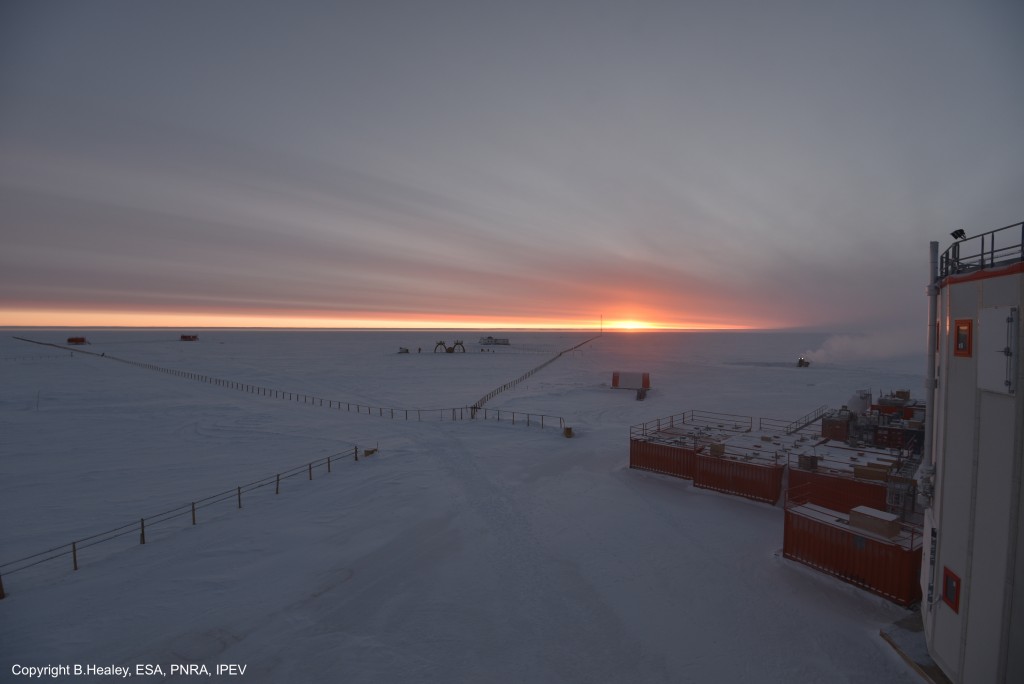

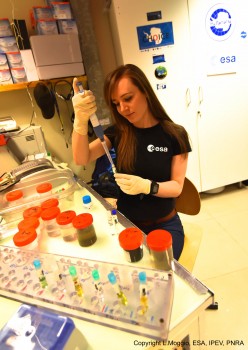
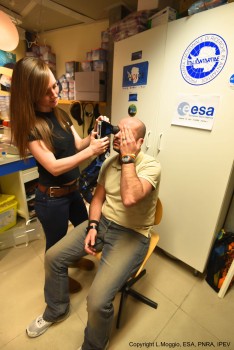
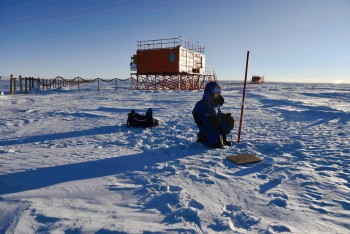
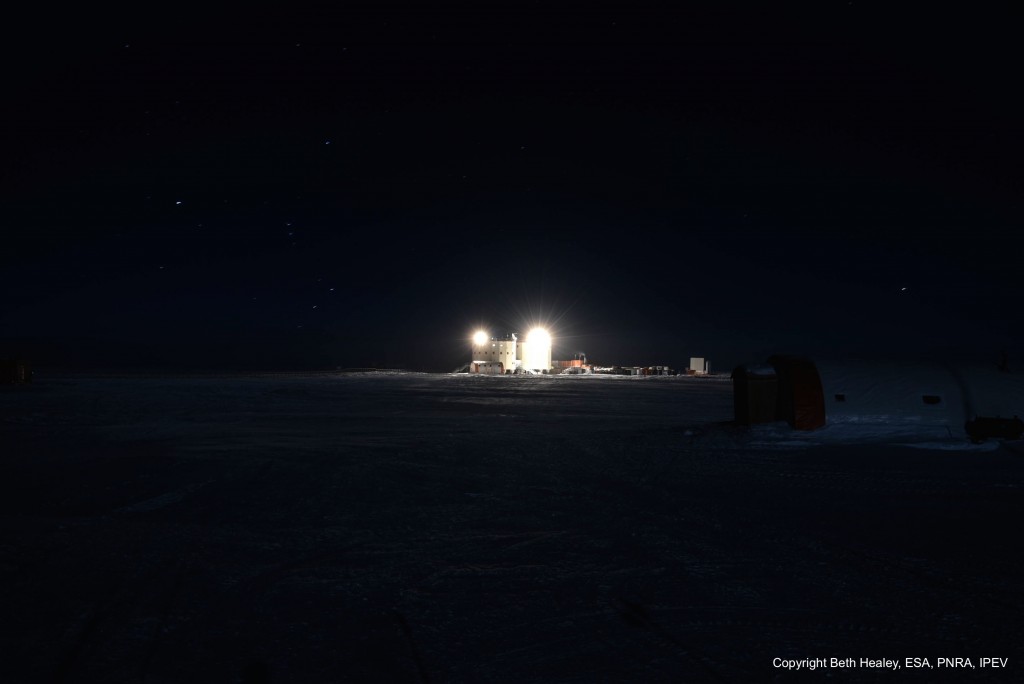



Discussion: 6 comments
Hi – really enjoyed your post (here and on FB)
Kind regards
Nick 🙂
Wow I’m so jealous of your job. How did you get involved with medicine at ESA? Is there somewhere else I can read about there medical research. It combines my two passions in life, medicine and space. Keep up the good work.
Impresionante! gracias por compartir un día con nosotros. Lastima no haber estudiado medicina para poder estar allí.
Saludos a todos los componentes del equipo desde España.
Awesome! thanks for sharing with us one day. It hurts not having studied for medical doctor to be there.
Greetings to all members of the team from Spain.
Hi! I’m right before choice of career, and I find your post really inspiring. How did you find this job? And could a bioengineer either work at the ESA?
Grazie per la condivisione!! State facendo un lavoro molto importante per noi tutti!! Salutatemi le stelle!!
Vallì
Earl Grey 🙁
Try builders, ‘Yorkshire’ and with evaporated milk. Less highbrow but the additional hairs on your chest add to the insulation (figuratively).